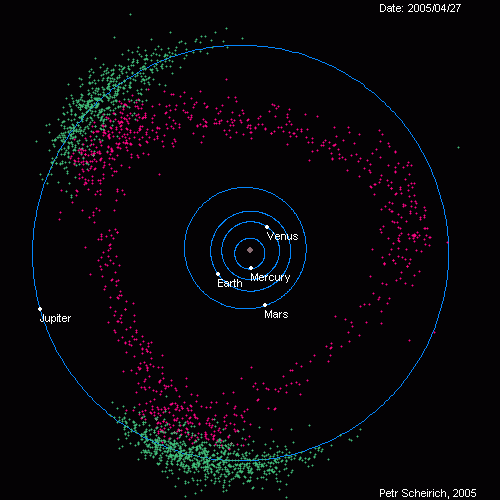
Checkout this awesome graphic of our solar system. I stumbled upon this while browsing Google+ (yes, I use Google+).
Read on below for the explanation and the source post.
Jupiter and the Sun are the two largest objects in our Solar System, and as they orbit around one another, they create regions where their gravity roughly cancels out. These are the Lagrangian points, created whenever two objects orbit one another: places where gravity is such that another small object can follow along in the orbit without being pulled in or out. And since things aren't getting pulled out of there, they get stuck in there as well: and so we have two large clumps of asteroids (and miscellaneous smaller space debris) in Jupiter's orbit. These are called the Trojan Asteroids; the group ahead of Jupiter is known as the Greek Camp, and the group behind it the Trojan Camp, with the asteroids in each camp being named after famous people in that war. Together, these two camps have as many asteroids as the Asteroid Belt.
Other stable patterns are possible, too: another one is what's called a 3:2 resonance pattern, asteroids whose motion gets confined to a basically triangular shape by the combined pull of Jupiter and the Sun. This group (for Jupiter) is called the Hilda Family, and their route forms a triangle with its three points at the two Lagrange points and at the point on Jupiter's orbit directly opposite it from the Sun.
None of these orbits are perfectly stable, because each of these asteroids is subject to pulling from everything in the Solar System; as a result, an asteroid can shift from the Lagrange points to the Hilda family, and from the Hilda family to the Asteroid Belt (not shown), especially if it runs into something and changes its course.Read the full explanation, including more about Pluto and Ceres, on Yonatan Zunger's Google+ post. Or check out the other interesting graphics from the very information-dense http://sajri.astronomy.cz/asteroidgroups/groups.htm.